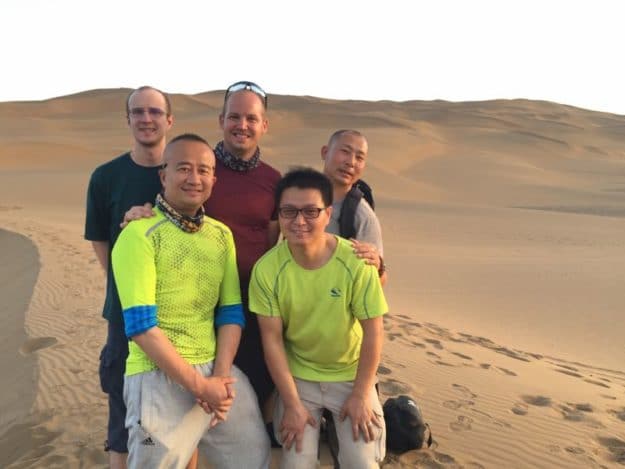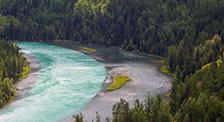10 Years in Xinjiang | CCTV Documentary
In July of 2016, I was connected to Han Bin, a senior producer who was planning to film a CCTV documentary series on the Xinjiang region. He was going to create 18 mini-documentaries on various stories and characters to help paint a picture of Xinjiang that he felt was missing from the state-run broadcaster.
For some reason he was fascinated with my story and asked if I would participate as one of the characters in the series.
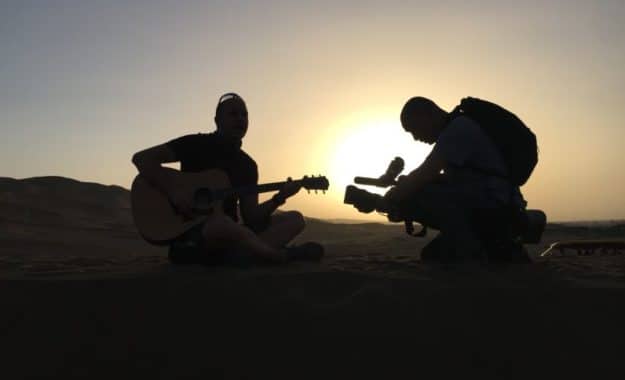
Honestly, I hesitated before saying yes.
I had no doubt that any documentary created by CCTV would be positive in nature, but that’s precisely what I would get criticized for.
“How dare you make a deal with the devil!” I could hear my ever-present critics saying. I liked the producer’s approach to the series though, and this was an opportunity that was too good to pass up.
I said yes and the date was set. We would start filming in August and it would air in October.
CCTV Comes to Xinjiang
After plenty of back and forth, we agreed on an itinerary that would take us through the Flaming Mountains of Turpan and end at the picturesque sand dunes of Shanshan.
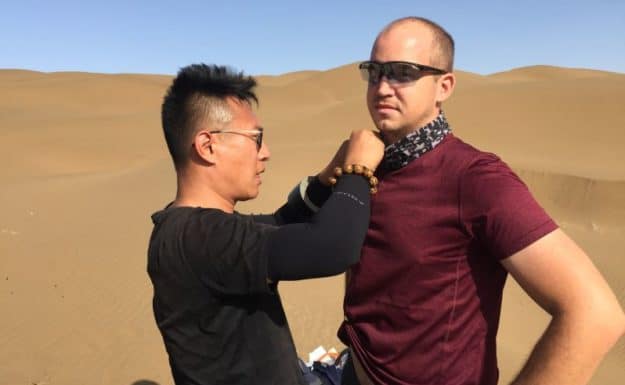
It was a crew of only three gentlemen: Han Bin (the producer), Mr. Huang (cameraman) and some young guy who was the assistant. We only had two days to shoot a 5-10 minute documentary so time was tight.
I don’t want to bore you with all the details. Instead, I’ll share with you a few fun trivia that made this such an interesting process:
- CCTV used my drone footage: This particular CCTV crew didn’t have a drone at their disposal so when they saw that I had brought my drone to fly in China, they jumped at the chance to use it. There was only one problem: none of them knew how to fly a drone. The only option was to have me fly it and capture the footage. Any aerial shots you see in the final product were shot by me, including the ones in the desert and while we’re riding bikes. But wait – how can I fly a drone and ride a bike at the same time?! Well…
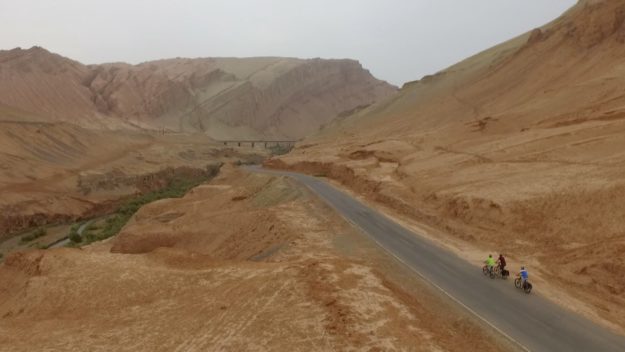
- I used a body double: This makes me laugh. While filming the drone shots of all of us riding a bicycle, I gave the clothes I was wearing to another friend I bribed into coming with us on the trip to Turpan (I mean hey, he got a free trip out of the deal!). He would ride the bicycle wearing my clothes while I stayed back to fly the drone with the cameraman directing over my shoulder.
- Even CCTV doesn’t have unrestricted access: I’m not an idiot (at least, most of the time). I was hoping to use CCTV to my advantage, meaning that perhaps I could have them help me access places that are normally off-limits for foreigners. One such place is the Buddhist caves just north of Turpan’s Tuyoq Valley. It’s never been opened to tourists (foreign or Chinese) and to my knowledge no foreigner has been able to view them. To their credit, CCTV tried hard. The producer was on the phone for about half an hour trying to pull strings with the local Turpan government to get us access to film near the caves. It would have been a once-in-a-lifetime opportunity but alas, it was not to be. They were told (and I believe them for some reason) that the caves are in such a fragile state that they virtually never grant access under any circumstance. No dice.
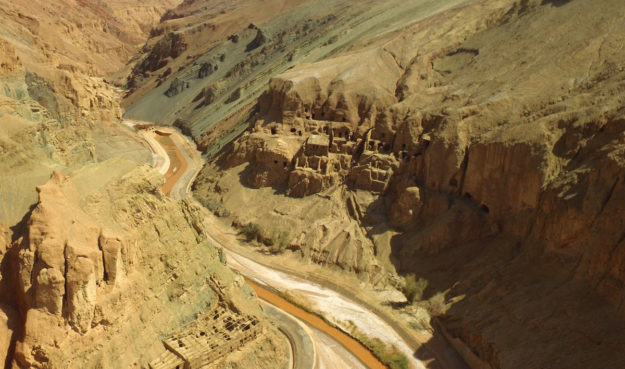
- Like all Xinjiang travel, we hit snags: The day before we were scheduled to leave the capital of Urumqi for Turpan, the highway that connected the two cities was hit with a massive wind storm that shut down traffic. Trucks were overturned, car windows were smashed…it was ugly. Thankfully it got better the day we left, but we still had problems on the way back. Part of the highway washed away into the river while we were filming in Turpan and it didn’t get fixed as fast as we thought it would. A trip between Turpan and Urumqi that should normally have taken 3 hours ended up taking 8 hours. Moral of the story: always expect the unexpected when traveling in Xinjiang.
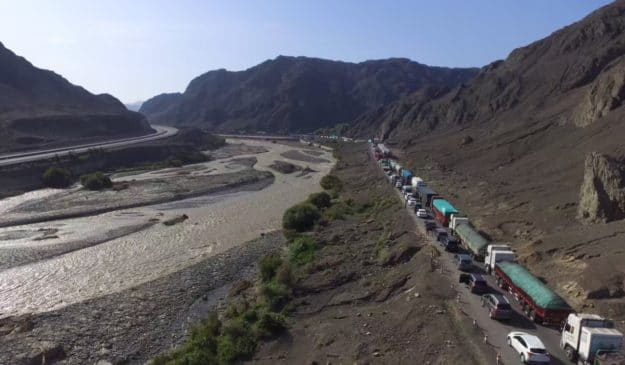
When all was said in done, my experience working with CCTV was a positive one. Once the documentary was finally edited (you can see it below), they asked if I would be willing to fly into Beijing to conduct live in-studio interviews about living in Xinjiang while the documentary aired.
Final Edit | FarWestChina Mini-Documentary
Now that you have a bit of background on the filming of this documentary, I hope you’ll take a few minutes to watch the final edit below. I’d love to get your feedback, so please do so either on this article or on the video’s YouTube page!
Don’t miss awesome, weekly videos…subscribe to FarWestChina on YouTube!
For those who are interested, you can see the other 17 parts of this series by CCTV titled Xinjiang | Exploring China’s New Frontier. They were able to tell some very interesting stories!
Final Thoughts | Expected Criticism
After the mini-documentary aired on October 17th, 2016 and the in-studio interviews were completed, I’m happy to say that the majority of the feedback from people was extremely positive. I’m blessed to have such an encouraging fan base!
As expected, however, I also received a fair bit of criticism. For some people, any affiliation with the Chinese government or any state-owned entities (which includes CCTV) automatically makes me a sell-out. I realize I can’t please everybody so although I recognize there are things which are unfair in Xinjiang, particularly among the Uyghur, I disagree that the only course of action I have is to take on the role of an activist and to boycott anything related to China.
My goal is to bridge the gap of understanding between Xinjiang and the rest of the world and, in turn, allow people to fall in love with this place and its people like I have.
Hopefully I’ve been able to do the same for you.
